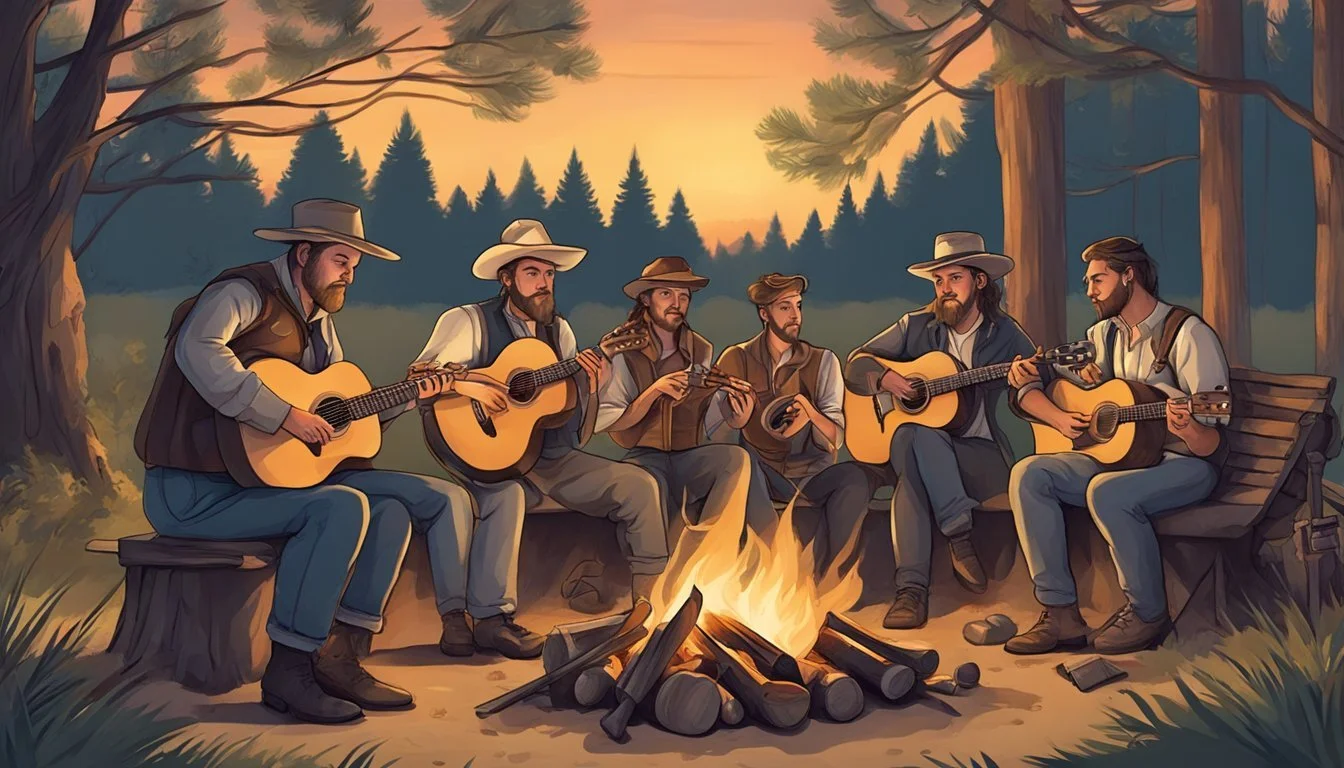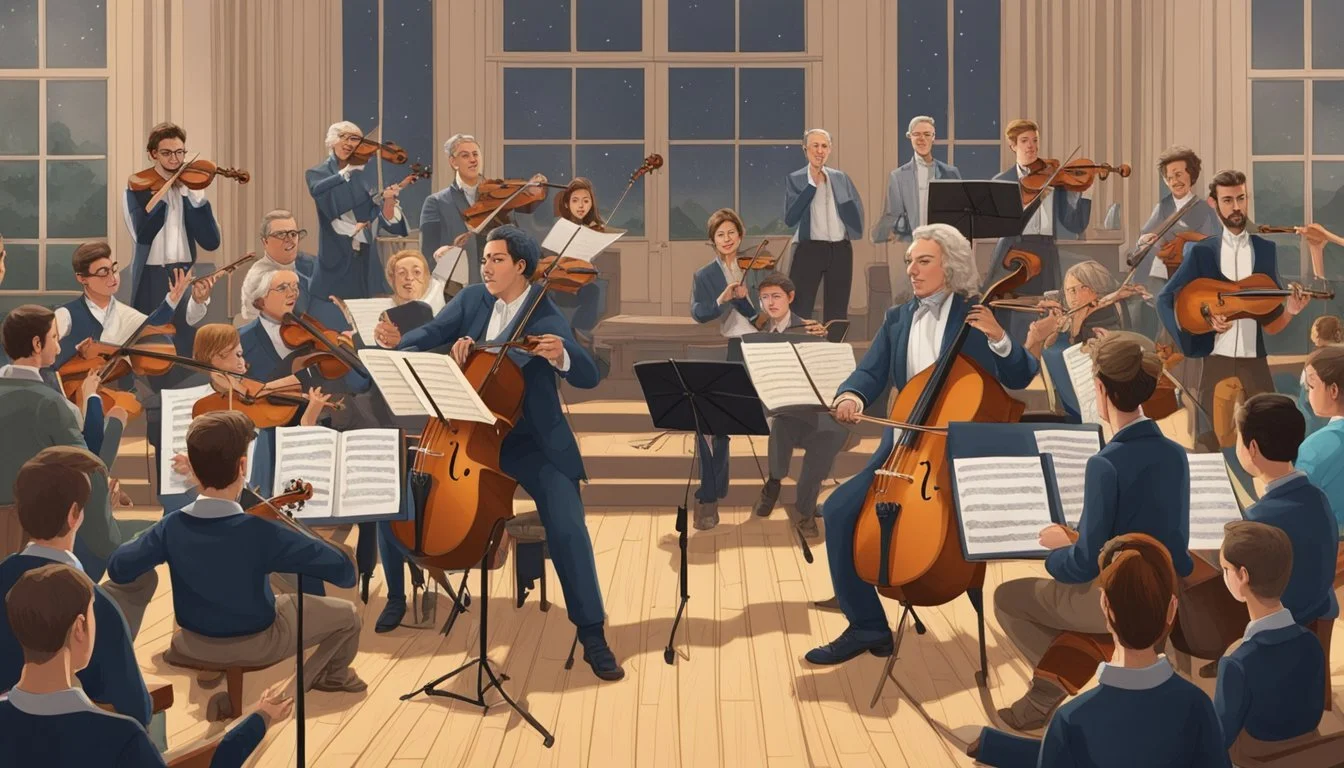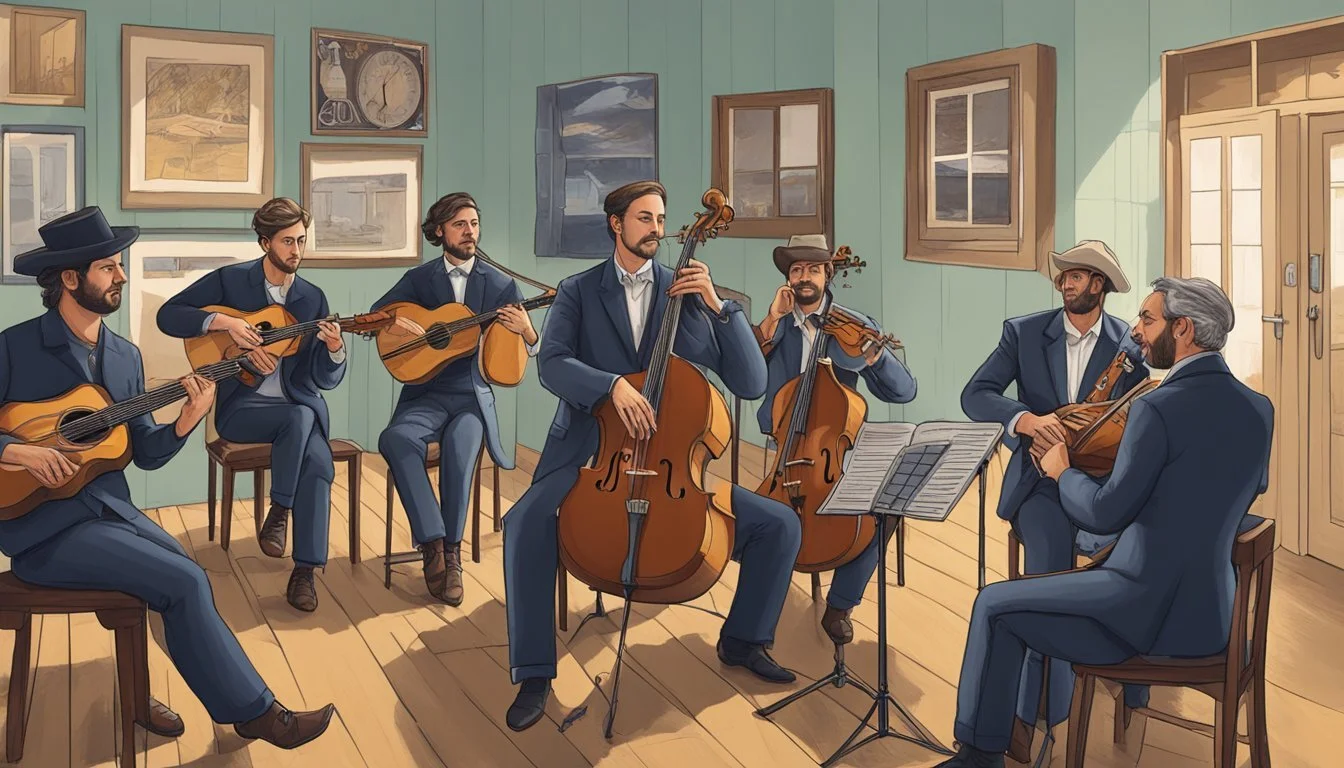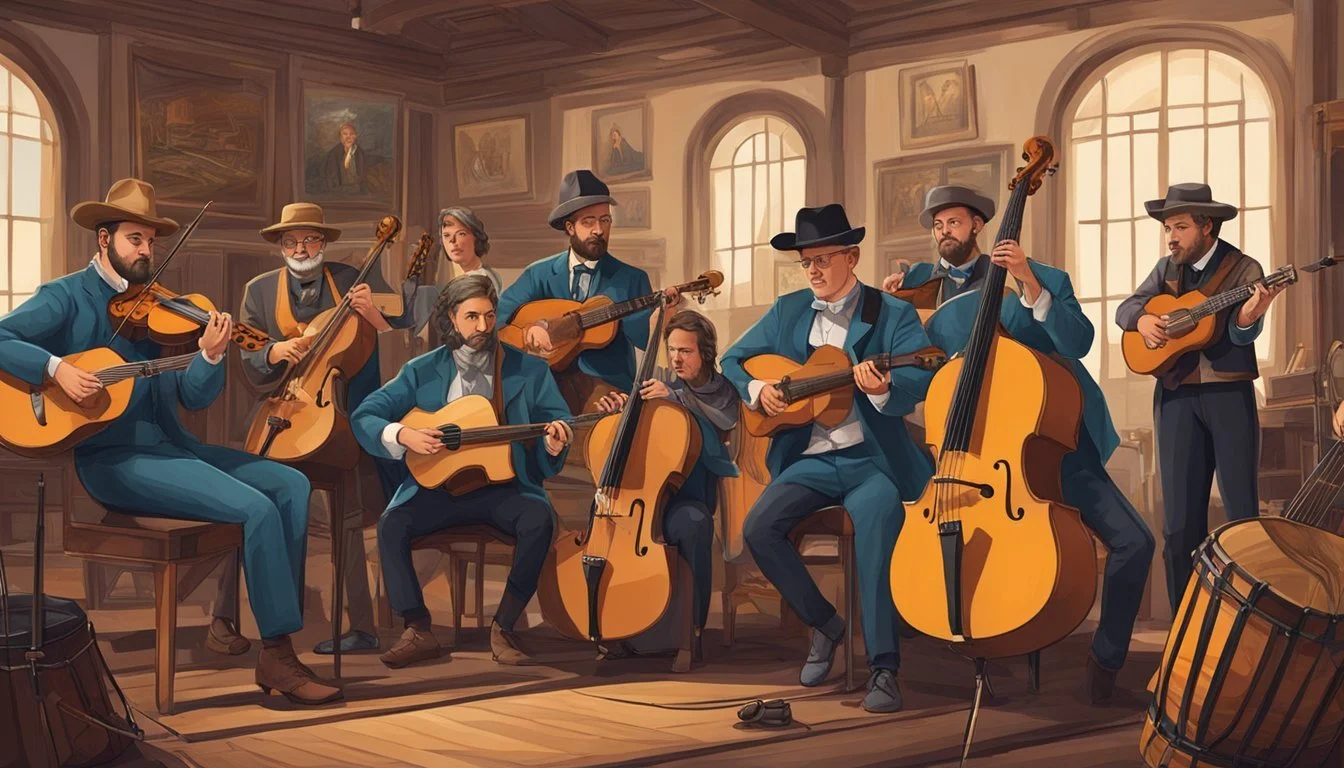The Legacy of German Texan Musicians and Composers
Cultural Impact and Influence
The legacy of German Texan musicians and composers is deeply interwoven into the state's cultural tapestry. From the earliest days of German immigration to Texas, such as in 1834 with Robert Justus Kleberg's importation of a piano and music books, Germans have brought their rich musical heritage to the region. This legacy has been preserved and celebrated through various means over the centuries, including the establishment of singing societies and annual festivals that honor traditional German music.
These German singing societies, originally all-male choral groups, proliferated throughout German communities in Texas during the 1800s. They played a crucial role in maintaining not only the music but also the language and social customs of German heritage. Events like Saengerfests, which are festivals of song, became a hallmark of these societies, drawing together music aficionados in celebration of a shared cultural identity. The Beethoven Maennerchor in San Antonio, founded in 1867, is an exemplar of such societies, dedicated to the preservation of German song and tradition.
Moreover, individual German Texan composers and musicians have made significant contributions to the broader American musical landscape. They have often blended traditional German styles with local influences, creating a unique Texan-German musical genre. This enduring legacy is evident in the rich offerings of German-Texan musical events today, underscoring the importance of this cultural fusion to the state's diverse artistic expression.
History and Influence
The settlement of German musicians in Texas during the 19th century laid a foundational stone for what would become a rich tapestry of cultural heritage. Their music intertwined with Texan society, ultimately shaping the state's musical landscape.
Early Settlement and Cultural Integration
German settlers began to arrive in Texas in the 1830s, with significant numbers establishing roots in areas such as New Braunfels and Fredericksburg. They brought with them a robust musical culture, incorporating traditional German songs and instruments into their new environment. Despite the challenges of colonization, these immigrants maintained their cultural identity, integrating their music with the sounds and social fabric of Texas.
The Role of Music in German Texan Society
Music served as a critical component of the German Texan community, functioning as both entertainment and a way to preserve their heritage. It played a central role in social gatherings, religious functions, and community celebrations. German Texans used music to teach their children their history and culture. Cities such as Austin and San Antonio became hubs for these musical traditions, nurturing a vibrant scene that extended well into the twentieth century.
Influence on Texan Music Landscape
The influence of German Texans in the state's music scene is undeniable. They enriched the Texan music landscape by introducing various instruments like the piano as early as the 1830s. By the 1840s, German musical soirées were popular in places like Houston's Kessler's Arcade. Their legacy lives on in the polka tunes heard at Texan festivals, the architecture of music halls, and the German-style bands that perform across the state, reflecting a fusion of German and Texan music culture.
Prominent Figures
The German Texan musical landscape is shaped by significant figures spanning the realms of classical composition and contemporary music. These individuals have contributed to the rich tapestry of German Texan musical heritage through their remarkable talents and enduring works.
Influential German Texan Musicians
Texas, with its strong German heritage, has been home to musicians who have left a profound impact on the state's cultural identity. John M. Steinfeldt stands out as a musician who embraced the German Texan ethos, contributing his skill as a pianist to the local cultural fabric. Equally noteworthy, Carl Venth, a composer and violinist, brought a touch of classical expertise, echoing the longstanding German tradition of excellence in composition and performance.
John M. Steinfeldt: Pianist known for his contributions to the German Texan music scene.
Carl Venth: Violinist and composer with profound classical influences.
The world of popular music also witnessed the rise of German Texan musicians who rose to professional prominence. Kenny Rogers, a singer with German heritage, exemplifies this crossover, achieving widespread acclaim beyond Texas.
Kenny Rogers: A singer of German descent who gained significant fame in the country and pop music spheres.
Notable Composers and Their Contributions
German composers have had a monumental influence on classical music, and their legacies continue to resonate in Texas. Ludwig van Beethoven, born in 1770, is hailed universally for his symphonies and chamber music, leaving an indelible mark on both German and Texan musical heritage.
Ludwig van Beethoven: Celebrated for his expansive body of work, which remains integral to concert repertoires worldwide.
The ties between traditional German compositional prowess and the Texan musical identity are undeniable, with renowned figures such as Johannes Brahms echoing through time with their melodic and structural innovations.
Johannes Brahms: Revered for his compositions that showcase the Romantic era's depth and complexity.
While not germane to German Texan history, Scott Joplin, known as the "King of Ragtime," influenced the broader Texan musical landscape through his innovative compositions, impacting local musicians and composers alike.
Scott Joplin: Though not a German Texan, his ragtime compositions had a significant influence on the musical scene in Texas.
German Texan Music Genres
The German Texan musical heritage encompasses a rich array of genres from classical traditions to folk music, and has influenced contemporary styles within the musical tapestry of Texas.
Development of Classical Music
German settlers introduced classical music to Texas, importing pianos and music books as early as 1834, and hosting events like musical soirées. This classical tradition flourished with the establishment of opera houses and symphonies, enriching the local culture. Performance of complex scores for chamber music and lieder—a form of German art songs—became central to cultural life, often featuring singing with piano accompaniment.
Folk and Popular Music Trends
In addition to classical music, German Texans embraced folk music, mixing their heritage with local influences. Popular gatherings known as Saengerfests, or singers' festivals, celebrated their love for choral music and folk songs. The coalescence of German and Texan elements birthed unique variants of rock and blues which continued to evolve, showcasing German Texan musicians as dynamic contributors to the broader music scene.
Contemporary Genres and Influences
Modern German Texan music artists have continued to influence a variety of genres beyond their traditional roots. A blending of historical German music with folk, rock, and blues, has led to novel and influential contributions to the landscape of Texas music. They have played a significant role in defining a distinctive "Texas music" sound which integrates various cultural influences, ultimately shaping the identity of music produced in the region.
Performance and Education
The legacy of German Texan musicians and composers notably extends into the realms of performance and educational institutions, reflecting a rich tradition of musical cultivation and public musical life. From music education to iconic events, these facets paint a vivid portrait of how German Texan culture has intertwined with its musical expressions.
Musical Education and Institutions
Early German settlers in Texas prioritized music education, establishing various institutions to continue their rich musical heritage. Singing societies, such as the Texas State Sängerbund, were instrumental not only in teaching songs and singing but also in preserving German music traditions like orchestral works and piano pieces. These societies—and later, music schools—played a pivotal role in fostering musical talent, emphasizing the education of instruments like the violin and piano.
Colleges and local community schools also contributed to this educational landscape, offering classes that encompassed both European classical elements and the nuances of folk tradition. This blend of instruction ensured the integration of German music into the Texan cultural fabric.
Performance Venues and Events
Performance tradition in the German Texan community was notably vibrant, with events such as Saengerfest — a festival of choral groups — showcasing the region's musical prowess. Theater spaces and concert halls echoed with the sound of concertos, vocal ensembles, and orchestras, bearing witness to a community that deeply valued live musical performance.
Musical soirées and seasonal celebrations often featured classical piano pieces and orchestras, creating opportunities for both education and entertainment. Moreover, the architecture of performance venues often reflected the heritage of Saxony and other German regions, enhancing the cultural experience.
Regularly scheduled concerts and annual festivals further provided platforms for both professional musicians and community members to engage with music. These events not only strengthened communal bonds but also perpetuated a legacy of German musical excellence in Texas.
Musical Instruments and Compositions
The history of German Texan music is fundamentally intertwined with their use of traditional European instruments and the innovative compositions that were birthed in this cultural melting pot. Instruments such as pianos and string instruments were central to their musical expression, while their compositions evolved to include a unique Texan flair.
The Piano in German Texan Music
The piano played a pivotal role in German Texan music, serving as both a solo and accompanying instrument. It facilitated the blending of traditional German music with Texan influences. Pianos, often imported from Europe or acquired through local merchants such as the Hauschild Music Company, were a symbol of cultural refinement within German Texan communities. They were used in everything from parlor music for entertainment to more formal recitals incorporating compositions that showcased the complex range of the instrument.
Piano roles:
Solo piano pieces
Piano accompaniment for operas and lieder
Central in teaching and practicing music
String Instruments and Their Roles
String instruments, particularly violins and guitars, were also staples in German Texan music culture. These instruments were cherished within string quartets and symphony orchestras, with violins often taking lead roles in these ensembles. Guitars offered a different texture to music, often featuring in more folkloric and popular musical assemblies. The presence of German Texan music is significant in the development of local repertoires, where the violin and guitar served as bridges between German classical traditions and burgeoning Texan styles.
String instruments in ensembles:
Lead violins in string quartets and symphony orchestras
Guitars in folk and popular music
Evolution of Repertoire and Composition
Throughout history, the repertoire and composition styles of German Texans evolved significantly. The blending of German classical roots with local Texan culture led to the creation of original scores that resonated with both the traditional and contemporary audiences. The violin concerto and other large-scale works adapted to include local themes, while smaller ensembles and solo pieces reflected the everyday life and struggles of the Texan people. This unique cross-pollination not only preserved German musical traditions but also allowed them to flourish and adapt in the New World.
Composition evolution:
Incorporation of Texan elements in traditional German forms
Development of new works for string quartets and the symphony orchestra
Musical Legacy and Criticism
The musical contributions of German Texan musicians and composers have had a lasting impact on both local and national music scenes, often sparking a range of critical responses that reflect the complexities of their work and influence.
Impact on Local and National Music Scenes
When tracing the lineage of German music's impact on Texas, one encounters the vital role played by German immigrants in shaping local Texas culture since the 1830s. Their musical soirées and importation of European traditions greatly enriched the local arts, introducing Texas to German lieder, symphonies, and opera. Nationally, the work of composers like Johann Sebastian Bach and Ludwig van Beethoven has deeply influenced American classical music. German symphonies and operas not only shaped the classical repertoire but also served as benchmarks for American composers who sought to craft a unique national identity in music.
Music Criticism and Analysis
Music criticism in relation to German composers, ranging from Bach to Wagner, has often centered on the skillful complexity and emotional depth of their compositions. Richard Wagner, for example, faced both adulation and severe criticism, with certain aspects of his work sparking debates over the perceived emotional authenticity of his music. Critics have equally analyzed the legacies of Mozart and Beethoven, whose symphonies are studied for their groundbreaking contributions to musical structure and thematic development. The work of these composers has undergone rigorous scrutiny for its technical mastery and the way it reflects broader German cultural values and traditions, shaping not only the music of South Texas but also the canon of Western classical music.
Socio-Cultural impact
The introduction of German music into Texan society fostered a unique cultural identity and bolstered community cohesion through organized societies and festivals.
Music and German Texan Identity
German settlers in Texas brought with them a rich musical heritage that significantly influenced Texan culture. Scholz Garten in Austin, established in 1866, is a notable example. It is not only the oldest beer garden in Texas but also served as a hub for German singing and celebration, thus bridging the gap between German traditions and Texan lifestyle. Through music, German Texans maintained a connection to their roots while also contributing to the cultural tapestry of the region. Law and revolution might have shaped the political landscape of Texas, but it was culture—expressed significantly through music—that helped in defining a community's identity.
Societies and Festivals
German singing societies played a central role in maintaining and nurturing German heritage through music. These societies, many of which were formed in the 19th century, were typically all-male choral groups that provided folk, religious, and classical music for various gatherings.
Singing Societies: Offering a slice of the homeland's traditions, these societies performed at family, church, and community events, shaping the social life of their communities.
Saengerfest and Texas State Sängerbund: Central to these societies were the singing festivals, known as Saengerfests, which were large, festive events bringing together different singing groups. The Texas State Sängerbund, the statewide association of these societies, was instrumental in organizing these events, which transcended simple musical performances, fostering a strong sense of camaraderie and cultural pride among German Texans.
The Adelsverein, also known as the German Emigration Company, played a pivotal role in the migration of Germans to Texas, indirectly establishing the foundation for these cultural impacts. The legacy of these societies and festivals continues to echo through Texas's cultural landscape today.
Notable Venues and Events
The legacy of German Texan musicians and composers is deeply rooted in the state's cultural fabric, with specific venues and events playing pivotal roles in preserving and celebrating this heritage.
Historical Theaters and Stages
In Texas, historical venues like Saengerrunde Hall in Austin have been fixtures in the German-Texan community since their inception. Founded in 1879, it has served as a hub for singing societies and cultural gatherings. Similarly, theaters in Galveston and Houston played host to musical soirées as early as the 1840s, establishing a tradition of entertainment and communal music-making.
Contemporary Music Festivals
Fast forward to the present, and Texas still celebrates its German musical roots through festivals and events. The Austin Saengerfest is one such example, a testament to the ongoing tradition of German-Texan musical gatherings, complete with concerts and dances. Additionally, the influence of German settlers can be heard in the music and festivities at cultural heritage events in Fredericksburg and New Braunfels, which regularly feature German music, including classical and opera genres.









